Where Soil Grows Above The Trees
12:09 minutes
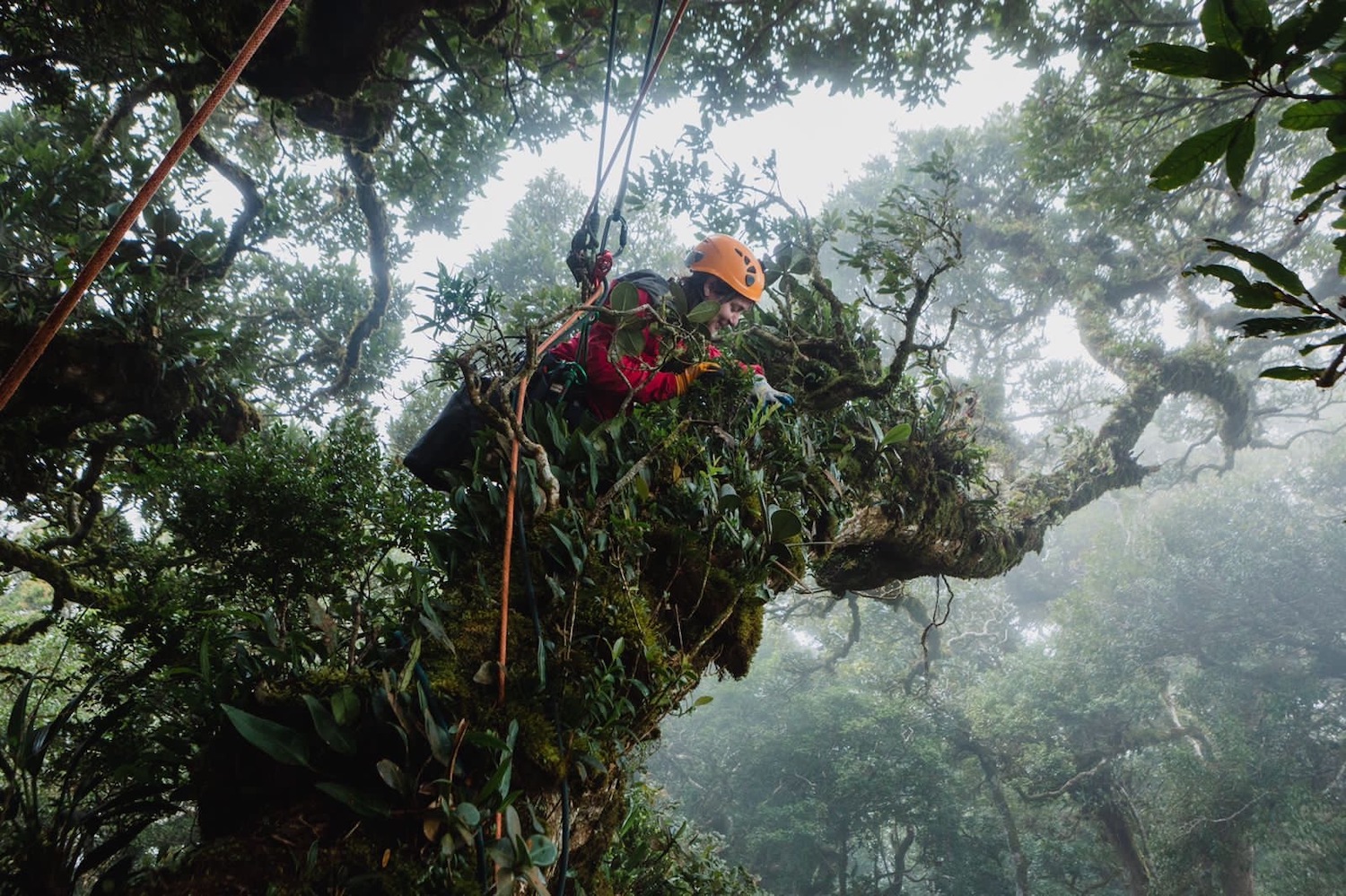
You might be used to the feeling of Earth under your feet, but did you know that there’s soil high above your head? Way up in the treetops, where ferns, mosses, flowers, and even trees grow on top of the forest. A new study in Geoderma describes the factors that contribute to how canopy soil is formed.
Ira talks with lead author Jessica Murray, an ecologist and PhD candidate at Utah State University in Logan, Utah. They discuss the importance of canopy soil, what we do and don’t know about it, and what it’s like to study it.
Check out more views from Murray’s field sites below!
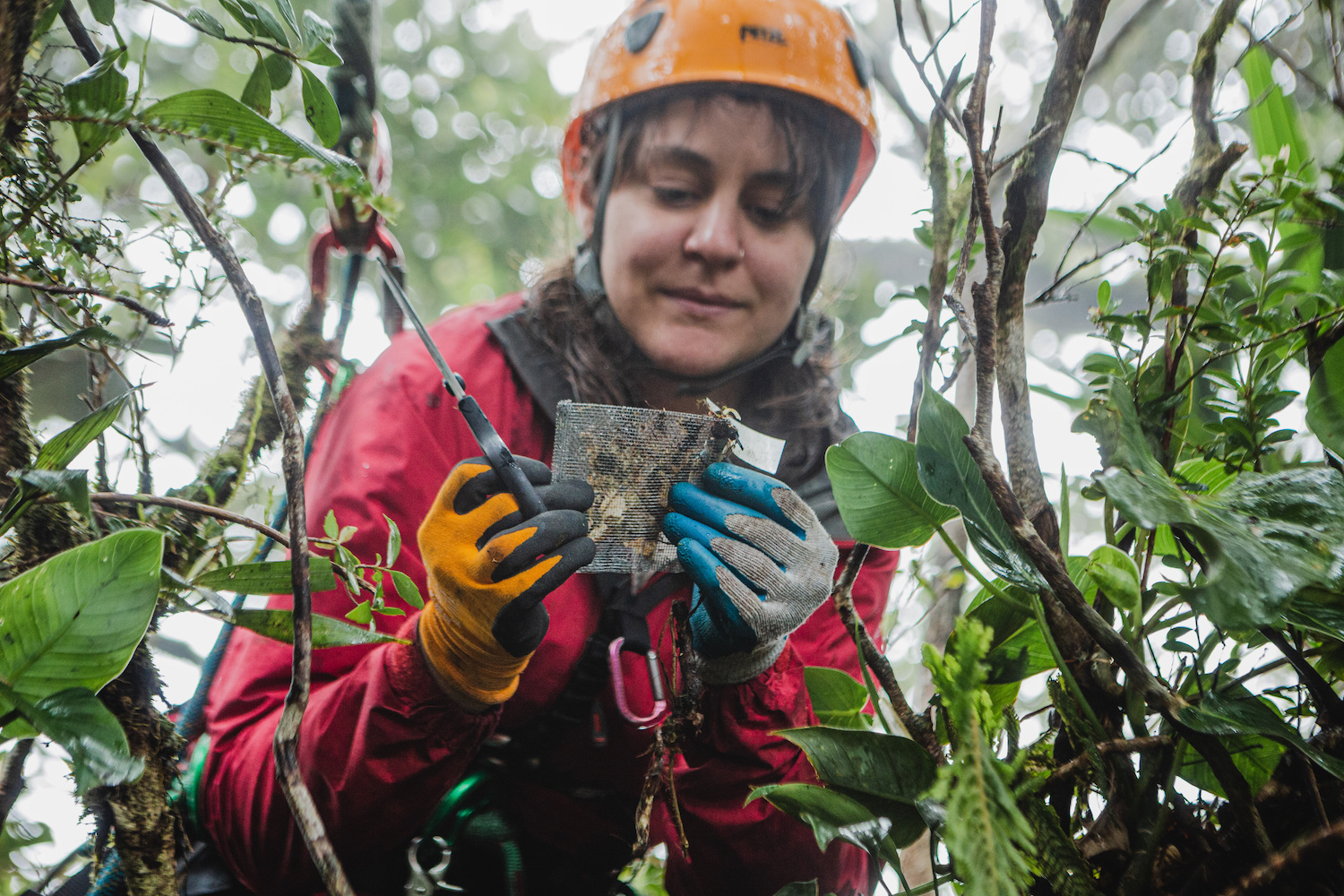
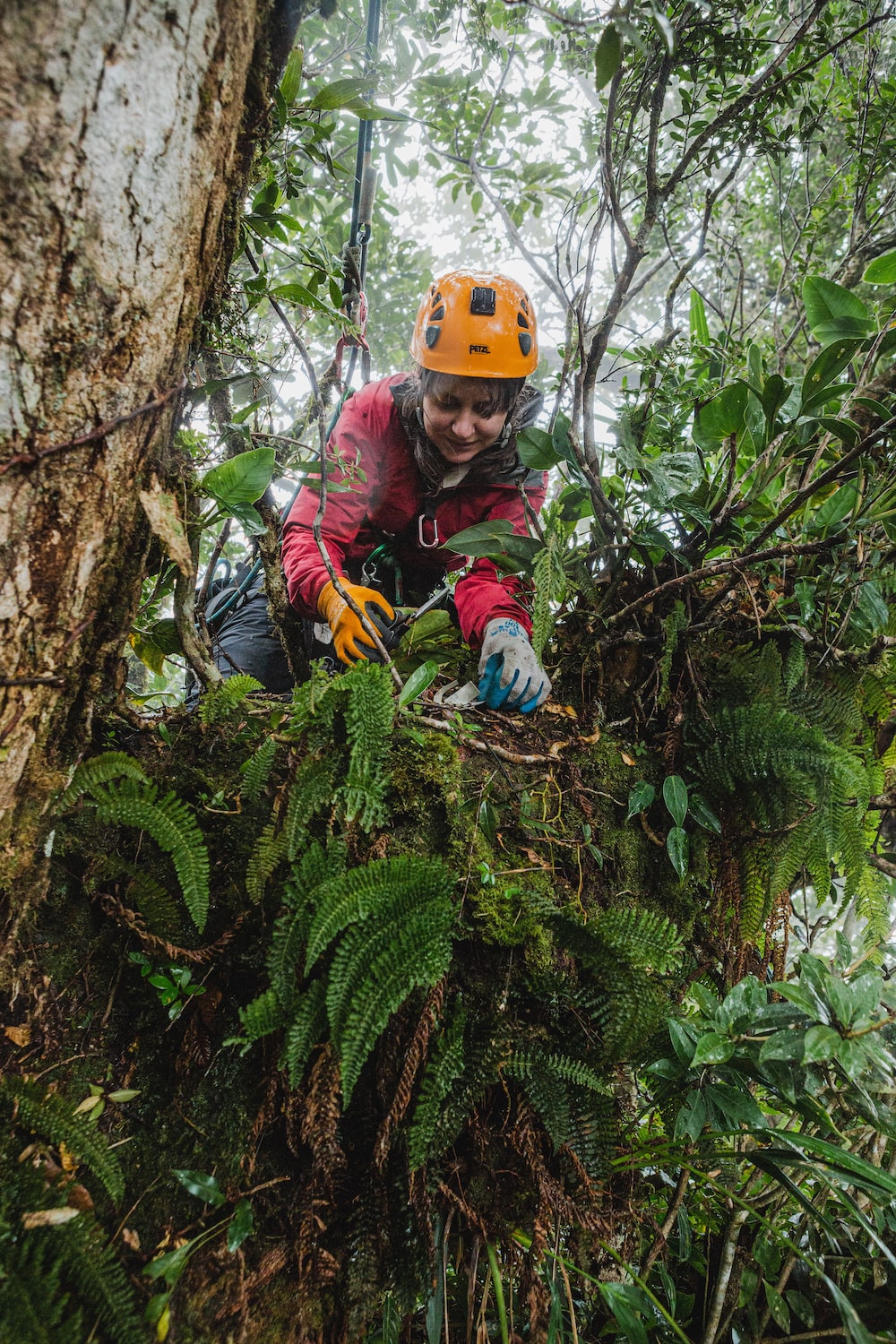
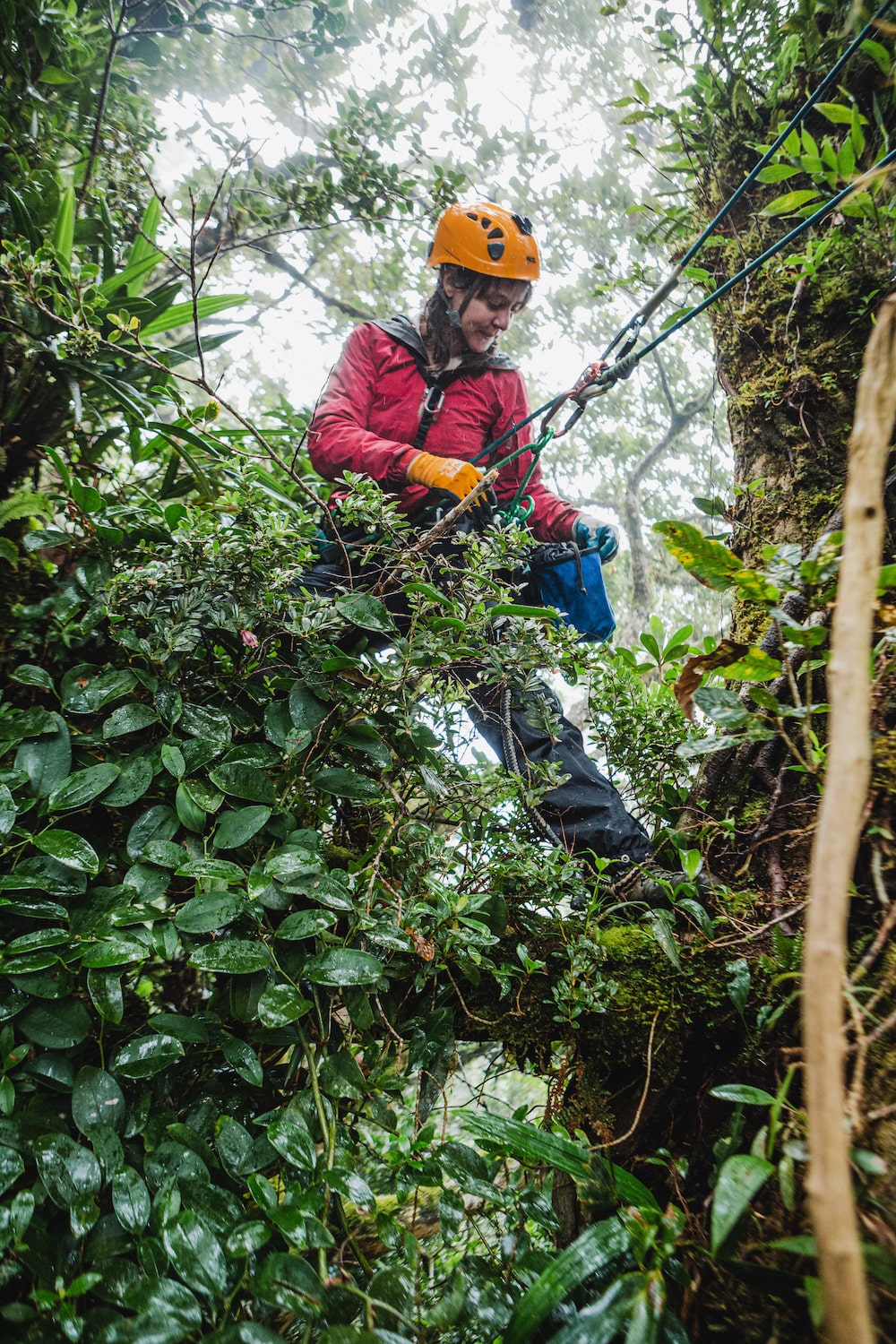
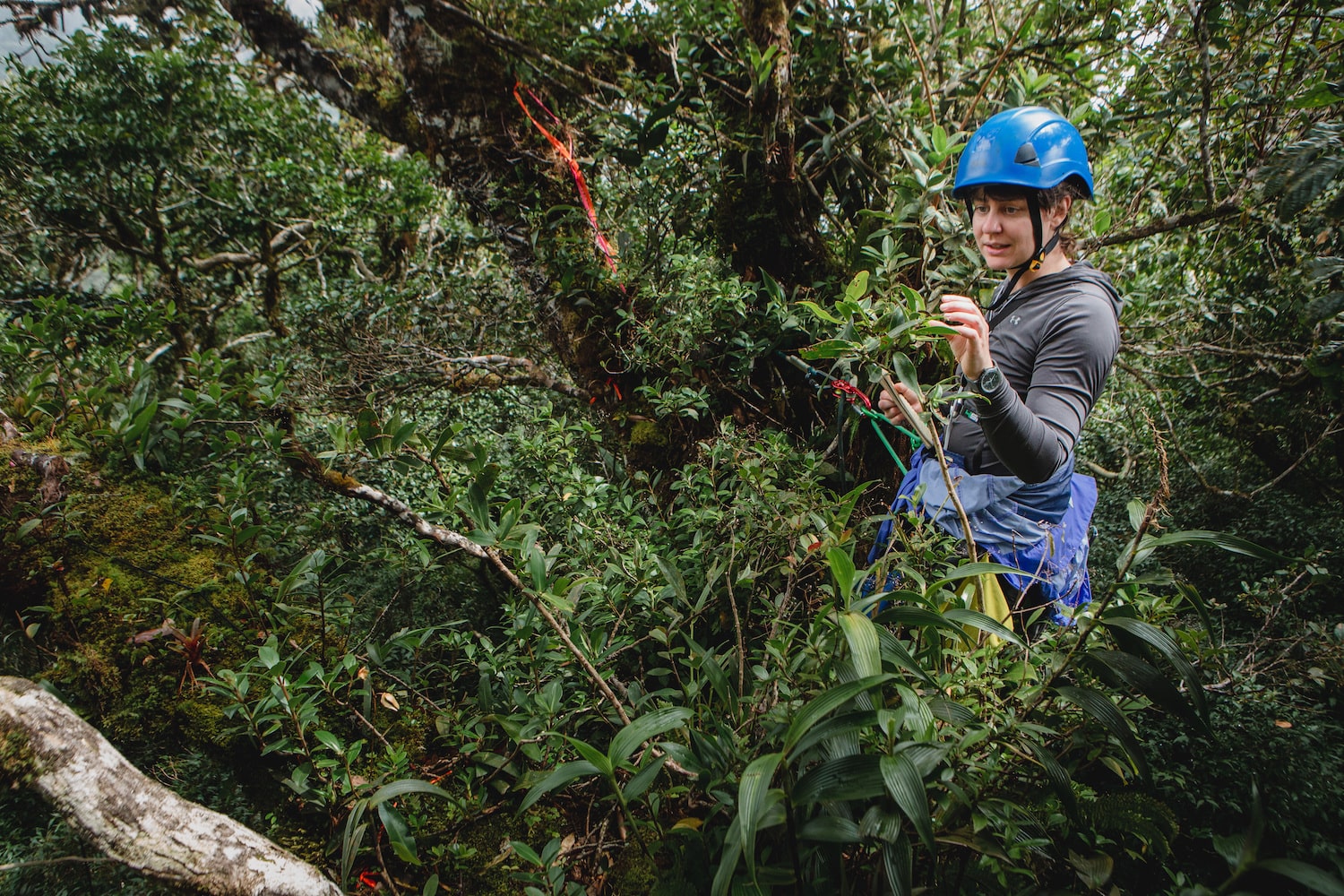
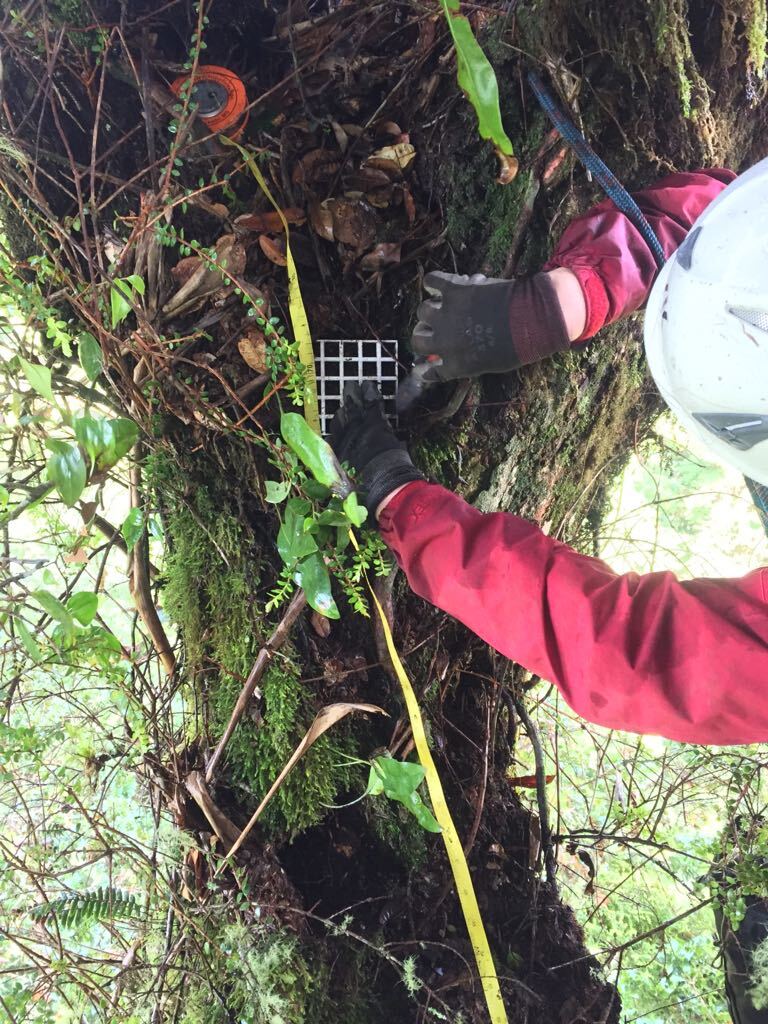
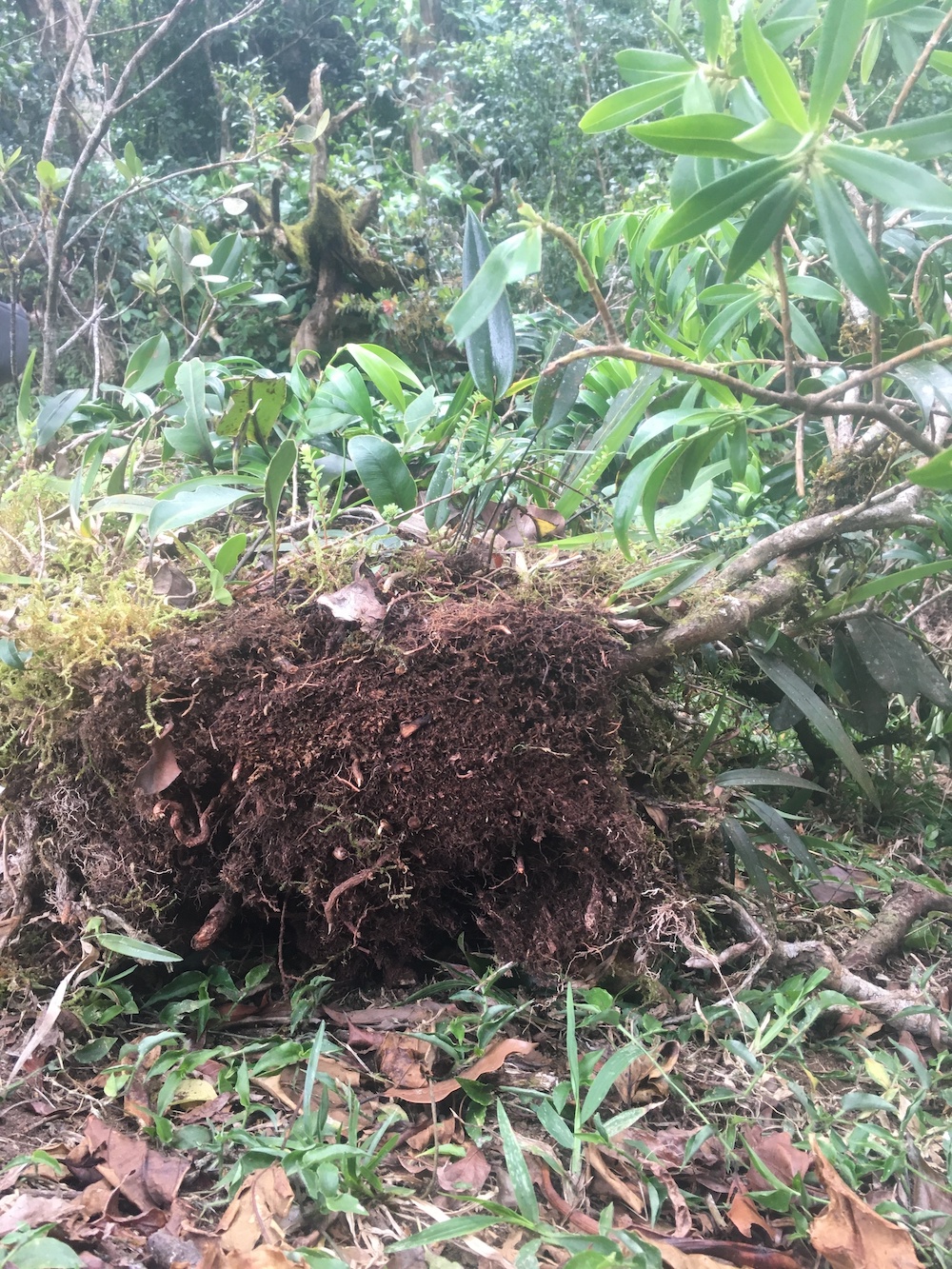
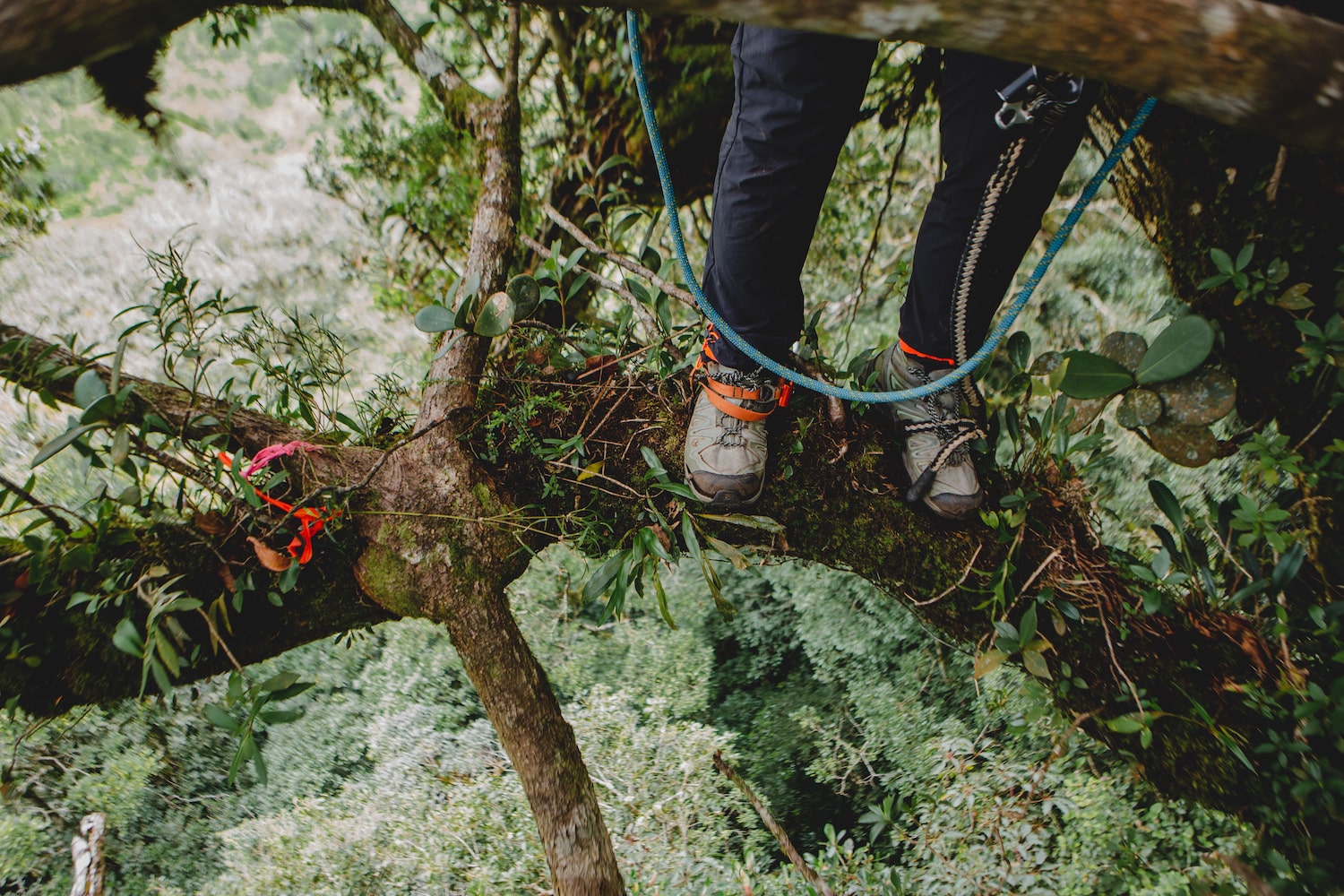
Jessica Murray is a Ph.D. candidate in the Department of Biology and Ecology Center at Utah State University in Logan, Utah.
IRA FLATOW: This is Science Friday. I’m Ira Flatow. Later in the hour, a conversation about rodents and the complicated paths of science careers, and checking in on the sounds of the planet with science radio pioneer and nature recordist Jim Metzner.
But first, we’re talking soil. Now, I know you might feel the Earth move under your feet, but I bet you didn’t know that there’s soil high above your head, way up in the treetops where ferns and mosses and flowers grow on top of the forest. Yes, they do. A new study in the journal Geoderma picks apart the factors that drive how canopy soil is made.
Joining me is the lead author, Jessica Murray, ecologist and PhD candidate at Utah State University in Logan, Utah. Welcome to Science Friday.
JESSICA MURRAY: Thank you, Ira. I’m so happy to be here.
IRA FLATOW: It’s nice to have you. I’ll bet you that hardly anybody has ever heard of canopy soil. Tell us what that is. How does it get up on the top of the trees there?
JESSICA MURRAY: Well, I hadn’t heard of it either until I saw it, pretty much. So canopy soil is called that because it is found in tree canopies, on tree branches and the crotches of trees. It develops over long periods of time. We don’t know exactly how long, but probably many decades, if not hundreds of years through the decomposition of epiphytes, which is the name for plants that grow on other plants.
You might have mosses. You might have vascular epiphytes, so shrubs trees, et cetera. The leaves produced by what we call the host tree, the roots of the epiphytes, any mosses– all of this organic material decomposing over time on tree branches builds up this sometimes really thick layer of soil.
IRA FLATOW: Wow, and your study looked at how the canopy soil is made, right? So tell us, what factors did you zoom in on?
JESSICA MURRAY: We went into the project thinking, let’s find out if canopy soil is vulnerable to climate change, but we actually realized we have to take a few steps back because we don’t fully understand where it’s even found or how it develops.
So I had noticed in some other work I’d been doing in the canopy that canopy soil isn’t as abundant in all forests, and also within a forest, sometimes there’s a lot on a certain tree and none on other trees within the same stand. So we started the project just asking, let’s identify some sites that represent different climates.
So we worked in Costa Rica using elevation gradients that could give us a gradient of temperature and precipitation, and we wanted to know across-forest how different climates might influence how much canopy soil there is within a forest, how the amount and also its chemistry might vary, and then even along a branch, we looked at those same questions.
IRA FLATOW: Does that mean you have to go up into the tree?
JESSICA MURRAY: It does.
IRA FLATOW: Or way up into the canopy? What is that like?
JESSICA MURRAY: Oh, it’s amazing Ira. It’s one of the most magical experiences I’ve had the privilege of having in my life. It’s just a totally different world. I’ve mostly worked in the canopy in Costa Rica and the tropics where you get, like I mentioned before, these really lush communities of these epiphytic plants.
I mean, we’re talking literally a forest within a forest. If you imagine being a small ant on a branch– I mean you’re walking like there’s a little understory of like mosses. There’s in some cases small trees growing out of tree branches. It’s really incredible.
IRA FLATOW: Wow. So how do you get up there? I mean, it’s way up there, isn’t it?
JESSICA MURRAY: Yeah, it’s a decent amount of work. In our case, we have to get a rope over a branch, and we use a giant slingshot called a big shot. Then we’ll pull a rope over, and then we climb the rope– not the tree– using harnesses, ascenders, different types of equipment.
IRA FLATOW: So set the scene for me. You’re up there, way above us all. You’re at the top of the tree. You’re in the canopy. What does it look like?
JESSICA MURRAY: In some of these sites, you are in what feels like a garden of plants– many different leaf shapes, plant functional groups, like bromeliads, orchids, bushes. There are a lot of bushes in the blueberry family, actually, at some of these.
IRA FLATOW: Wait a minute. Wait a minute. There are blueberry bushes?
JESSICA MURRAY: Yeah. I mean, not the species blueberry but the family Ericaceae. Yeah, in some of these sites, there are a lot of plants in that family. So they look kind of like blueberry or like huckleberry plants. There are many very beautiful, colorful birds like chlorophonia that will visit the fruits of some of these epiphytes, and sometimes we see monkeys.
In Costa Rica, we see three different species of monkeys. I’ve had them come pretty close. It really makes you appreciate how much better they are at being in the canopy then you are.
IRA FLATOW: Are they saying to you, hey what are you doing up here?
JESSICA MURRAY: Yeah. Sometimes I feel like they’re looking at me and making fun of me for having all these like ropes and carabiners and stuff, and they’re just effortlessly hanging by a tail.
IRA FLATOW: That’s cool. All right, so you’re up there. You’re taking samples from different parts of, let’s say, a branch. What is in the soil? Did the soil vary from point to point?
JESSICA MURRAY: Yeah. I mean, a big part of this study was looking at the different scales of variation, like how much does canopy soil abundance and chemical composition vary across forests, within forests, along a branch? It varies so much along a branch, and I just have so many more questions about why.
I think really thinking of this as a forest within a forest is helpful because there’s all these different plants. In some cases, it’s a really diverse community along a single branch, and I think they’re having some really interesting impacts on really small scales over this soil and sort of what it’s like.
IRA FLATOW: Really interesting. So you told me about the berry bushes up there, and you told me about meeting monkeys up there. What’s the weirdest critter you’ve seen up there?
JESSICA MURRAY: I can’t remember its name, so I’ll just describe it. I’d never seen anything like it before. It was maybe the size of like a half dollar, and it walked sort of like a crab and was covered in canopy soil. Later I found that it’s a creature in the, I think, true bug order, Hemiptera, that as a juvenile will take soil debris and put it on its body as like an exoskeleton like a protective layer.
In this case, it looked like this creature was using canopy soil as that protective layer, but I had never seen any insect that looked like that. I did send pictures around and got the name, but I’ll have to give that to you later.
IRA FLATOW: You said originally you wanted to look at the climate impacts on canopy soil. Were you able to figure any of that out now, or are you just collecting samples?
JESSICA MURRAY: Yeah. An important finding of our study isn’t actually that surprising to anybody who’s worked in canopy ecosystems, but I think was important to be able to quantify, which is that canopy soil is most abundant in big trees, which makes sense because probably it takes a long time and a large enough surface area for it to develop.
We found that it’s more common or more abundant in cool sites and foggy sites, and that’s probably because when temperatures aren’t too warm, your decomposition is slower. The fogginess is probably related to the epiphyte community. Epiphytes, these plants that grow on trees, their abundance and diversity tends to peak at these middle elevation tropical montane ecosystems like cloud forests.
I don’t study epiphytes directly, but I think that’s largely because they can use all of this atmospheric water, like cloud water, fog. They have these really cool adaptations to pull water out of the air, which is important because they don’t have roots in the ground to access groundwater.
So we found that, and that relates to climate change because unfortunately, cloud forests where these soils seem to be the most abundant, are some of our most threatened ecosystems in the world. They’re warming. They’re seeing a lift in cloud-base height, which means forests that previously was considered cloud forest increasingly are losing cloud cover due to land-use change like deforestation and also climate change.
That finding and just the reality– it doesn’t look great for canopy soil.
IRA FLATOW: Do we know why the canopy soil is so important? Do we know what it does, where it fits in the ecosystem of the forest?
JESSICA MURRAY: We have some clues. I would say it hasn’t been studied, but the studies that have been done have identified some pretty important roles. So one is canopy soil and the epiphytes that associate with it acts like a sponge for water– so sort of intercept water, hold it like a sponge so that in these dry periods that we’re seeing increasingly, maybe there’s a little more water storage. So that’s a really important role– the hydrologic impact.
Nutrients– actually there are organisms, microbes, in canopy soil that can fix nitrogen from the air. Often there’s moss growing on canopy soil that can also bring in nitrogen from the atmosphere and other nutrients, but it can also store nutrients.
Then there are two major– I’ll say three major ways that the nutrients in canopy soil and the epiphytes can benefit the greater forest. So one, which is really exciting and people love to hear about, is something called adventitious roots. We found that– or I haven’t. Researchers like Nalini Nadkarni and Korena Mafune have found that sometimes trees will produce roots from their branches that grow into the canopy soil to take advantage of the rich nutrients in that soil.
IRA FLATOW: So they just sprout roots way up there?
JESSICA MURRAY: Yeah, right out of their branches. It’s so weird and so amazing.
IRA FLATOW: I’ve seen orchids do that, but I didn’t know that the trees themselves do that. Wow.
JESSICA MURRAY: Yeah, we have some records of trees doing it. We don’t really know the scale. It’s pretty hard to study it, so figuring out who those roots belong to is really difficult. But we have found that some of them are from the actual tree, but also when there’s a rain event or a tree branch falls, sometimes this canopy soil and the epiphytes are displaced to the ground. So that’s a huge [? pulse ?] of nutrients to the ground and the tree roots.
Then the other way is just as it rains, sometimes the nutrients held within canopy soil is leached and can move down the tree trunk into the soil below. The third one that I find particularly interesting is canopy soil as a carbon store that we’re not actually accounting for.
So canopy soil is like 45% carbon. So based on some back-of-the-envelope calculations, I think the canopy soil is like 4% of the total soil carbon, but we’re not accounting for it. So I would like to see more work to understand on a larger scale to what degree canopy soil is contributing to forest carbon stocks.
IRA FLATOW: Jessica, good luck with your work, and thank you for taking time to be with us today. Fascinating stuff.
JESSICA MURRAY: Thank you for having me, Ira.
IRA FLATOW: Jessica Murray, ecologist and PhD candidate at Utah State University in Logan, Utah. You can get a peek of the canopy soil that Jessica studies. Go to sciencefriday.com/treetops.
Copyright © 2023 Science Friday Initiative. All rights reserved. Science Friday transcripts are produced on a tight deadline by 3Play Media. Fidelity to the original aired/published audio or video file might vary, and text might be updated or amended in the future. For the authoritative record of Science Friday’s programming, please visit the original aired/published recording. For terms of use and more information, visit our policies pages at http://www.sciencefriday.com/about/policies/
Rasha Aridi is a producer for Science Friday and the inaugural Outrider/Burroughs Wellcome Fund Fellow. She loves stories about weird critters, science adventures, and the intersection of science and history.
Shoshannah Buxbaum is a producer for Science Friday. She’s particularly drawn to stories about health, psychology, and the environment. She’s a proud New Jersey native and will happily share her opinions on why the state is deserving of a little more love.
Ira Flatow is the founder and host of Science Friday. His green thumb has revived many an office plant at death’s door.